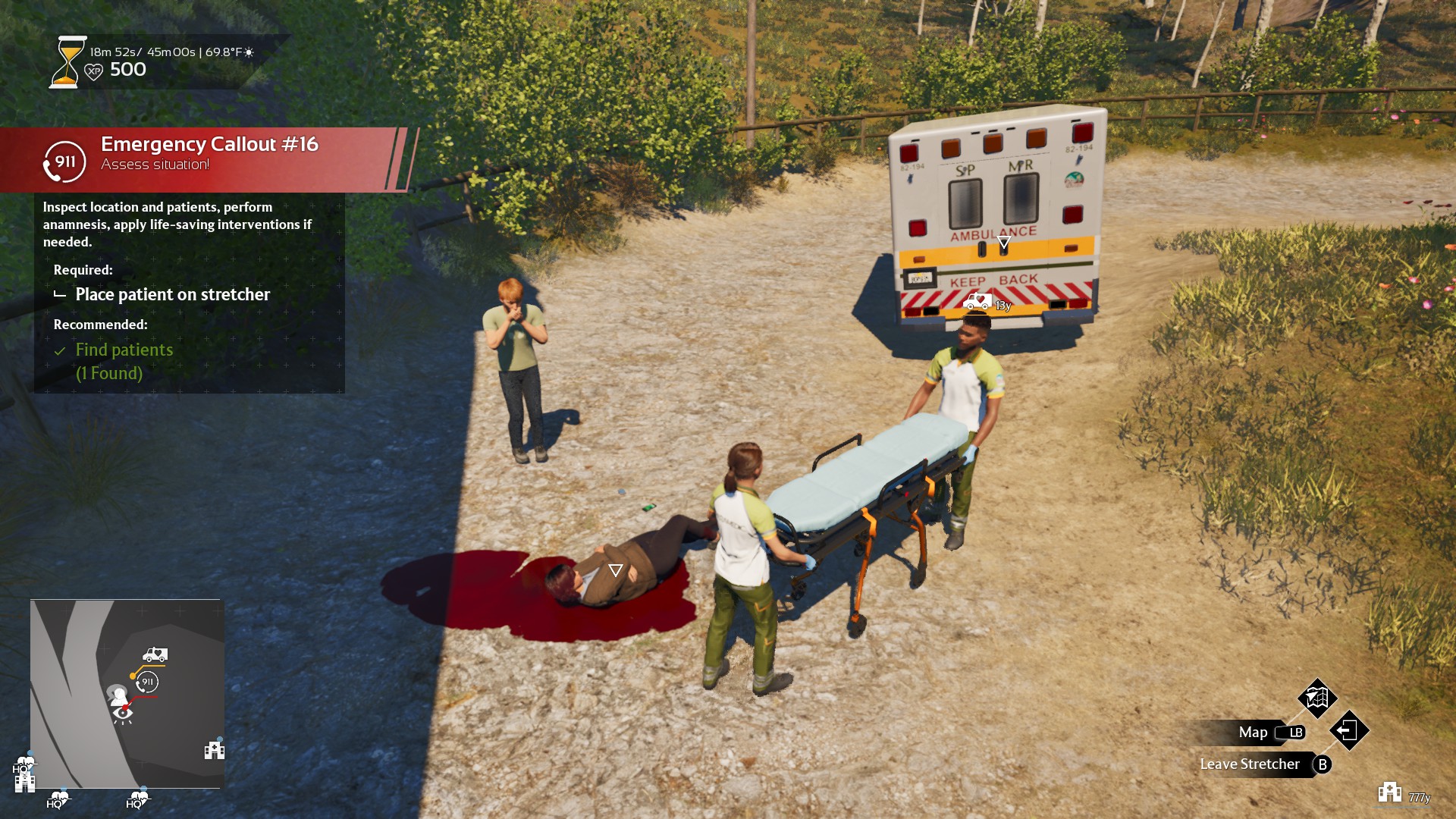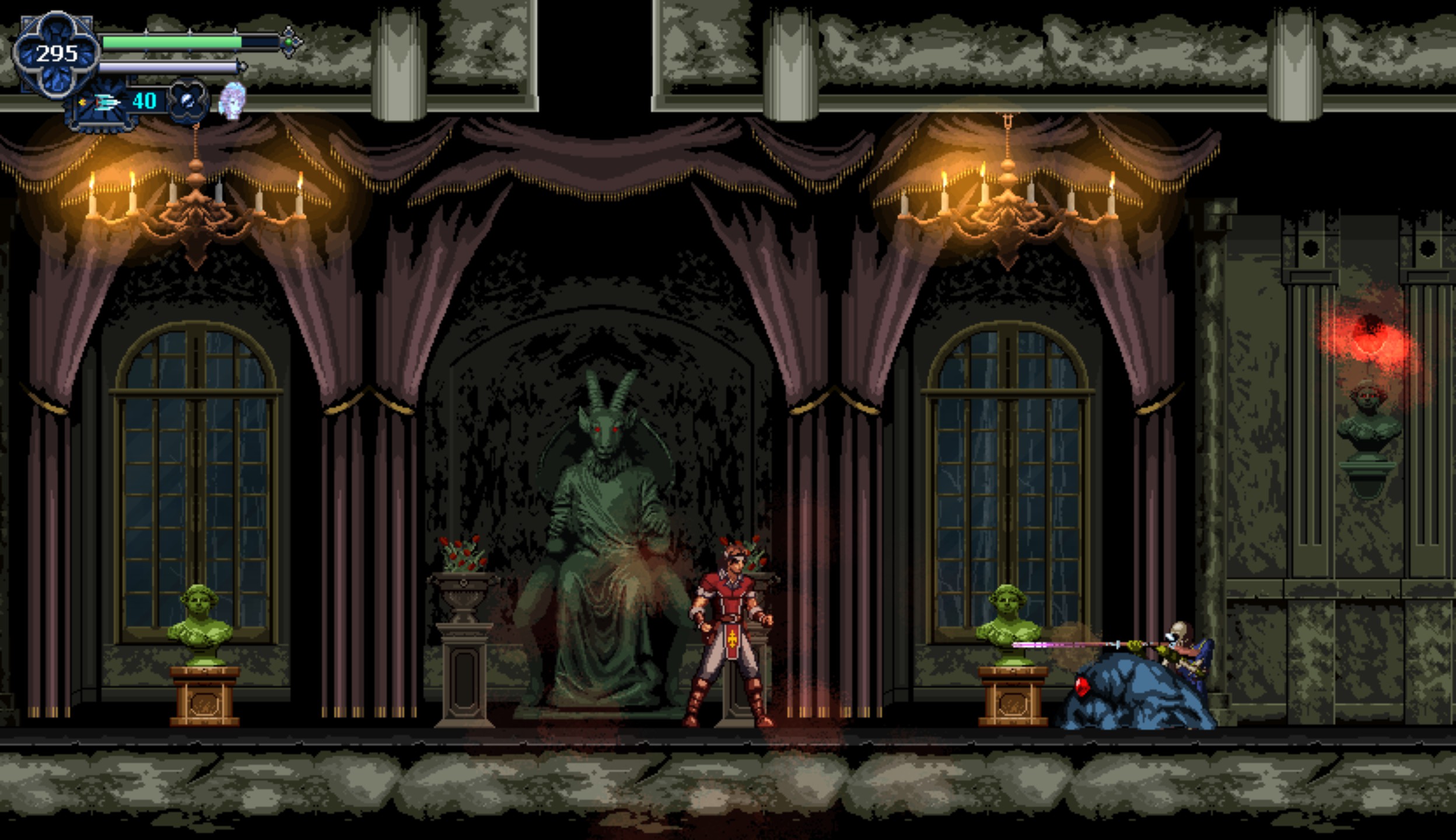Upon seeing Ambulance Life: A Paramedic Simulator for the first time, I was incredibly interested. The idea of saving people during emergencies and zooming them to the hospital was something I thought could really end up fun. Granted, I knew actually making a good game around this was going to be a tall order. There’s a valiant attempt here in some aspects to make good on the concept’s promise, but due to huge amounts of jank, sloppy progression, and some incredibly extreme repetition, the game can’t help but collapse under its own weight. There’s some fun to be had here and there, but this game really needed another shot of epinephrine to get its heart going again.
You start by picking from one of several avatars (which you can change on the shift screen,) before Ambulance Life: A Paramedic Simulator lets you into tutorials. The premise is exactly as you’d imagine – you’re a paramedic and it’s your job to save people from certain death and get them to the hospital in time. The game’s fictional setting is San Pelicano (which means “Saint Pelican,” so maybe someone didn’t understand that similarly named places are named after actual saints) and there are three interconnected districts in which you can go and pick up patients.
Visually, the game looks poor but passable. Much like most simulator games, the art direction is bland, the character models are incredibly dated and laughable, and the voice acting doesn’t impress at all. Also similar to other simulators, the performance is pretty awful. On a 3090 Ti and 5700x, I mostly got around 40 fps. Lowering the settings and using upscaling made zero difference. There’s a lot of weird graphical issues, such as when you’re treating patients in your ambulance. For instance, the tube on the oxygen mask flips around strangely and the game starts stuttering whenever I would administer meds via syringe.
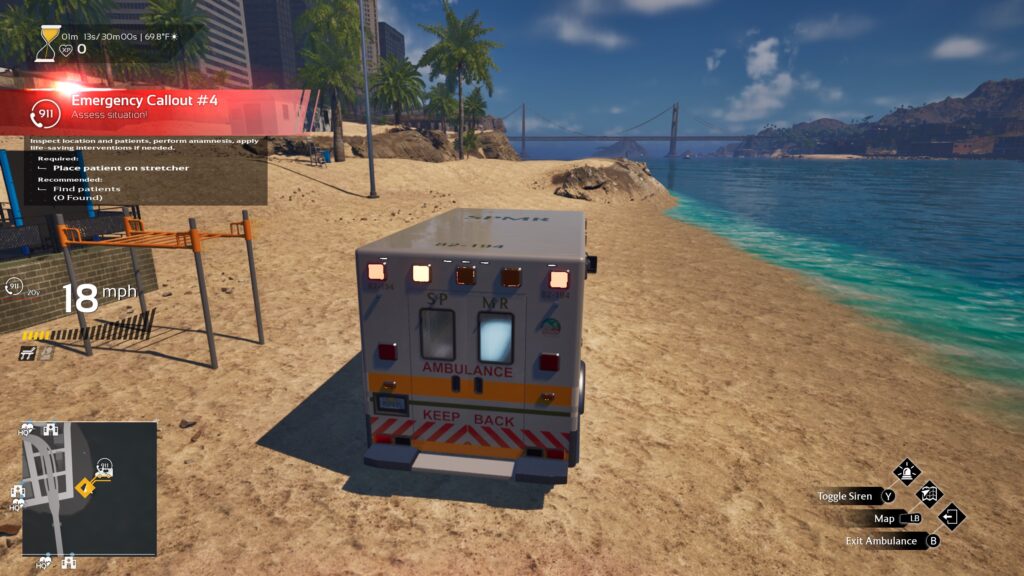
You can pick between shift lengths, although only the 15 minute one is available at first (followed by 30 and then 45.) During that time, you’ll wait for 911 calls in your ambulance and then drive to the scene. Upon getting there, you can talk to the patient (if they’re capable of talking, anyway,) look them over to try and get an idea of how to help them. You’ll also get the stretcher out of the ambulance, put them on it, and then load them into the back. Then you’ll try and stabilise them before finally taking them to the hospital, where you’re graded and given experience depending on how well you did.
For the first few hours, I had a pretty decent time with Ambulance Life: A Paramedic Simulator. As you accrue experience, you’ll level up whichever of the three districts you’re working in, granting new callouts (i.e, panic attacks, gunshots, car crashes, overdoses, etc,) new tools and meds you can use, vehicles, catastrophe events, and new districts. At first, levelling up is quick and it doesn’t take long at all to complete the first district. However, when it came time to unlock the third district via the second district, it ended up eventually taking hours to even get one level. But you want to play the game a lot, right?
Well, that’s true in theory. I mentioned the callouts you unlock before. The way these work is that they fall under similar umbrellas as I specified. However, each callout only has a few variations. During drug overdose callouts, I found myself at the exact same house, seeing someone lying in the exact same spot, with the exact same drugs both on the ground near them and in their system. Ambulance Life: A Paramedic Simulator has you doing the exact same callouts over and over and over again. There doesn’t appear to be any system in place to ensure that they rotate. That seems like it would have been simple enough to implement.
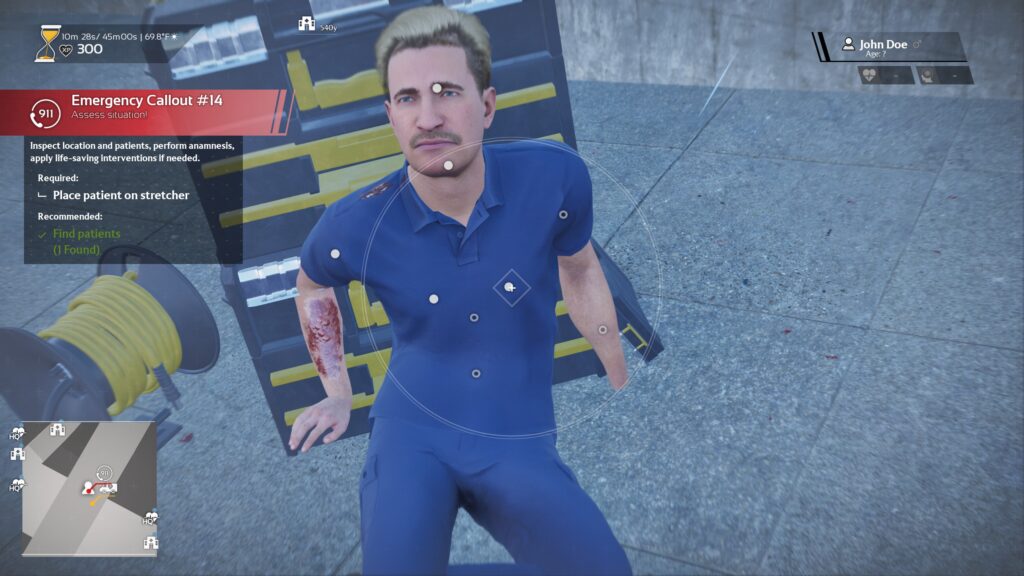
As you can imagine, this not only gets incredibly old, but shatters immersion. The patients are all randomly generated, with different faces, hair, body types, etc, but everything else is often identical, right down to the dialogue. You’ll also see the same few faces reused, along with often similarly baffling patient names. There’s variety in terms of race, but it’s incredibly common to find white and black patients with a mix of Korean and Japanese names. They’re all drawn from random pools and it’s as funny as it sounds. Just as comical is how tiny the number of lines are.
There were times I’d have a patient in my ambulance during treatment and they’d say the same exact badly delivered line four or five times in a row. Another abnormality is that you can see a seam on the patient character models when their shirts are off. This starts around the collarbone and makes them look like action figures. It’s a bizarre thing to have left in the game. When you actually treat patients in the back of an ambulance, you’ll be able to check their vitals, care for their wounds, and administer meds. You do this via selections in the UI and, much like the rest of the game, they get old very quickly.
You’ll see the exact same janky animations dozens if not hundreds of times. A couple, such as vascular access devices and bandages, have a simple minigame associated with them, which can be thankfully turned off. But there are some serious peculiarities in the treatment aspect. Firstly, you don’t appear to be able to remove patient’s clothing directly. You’ll do so when you check their vitals or bandage them, meaning their shirts and the like would always come off when I checked those, but I’d need to go to apply bandages and then back out just to check their legs for cuts.
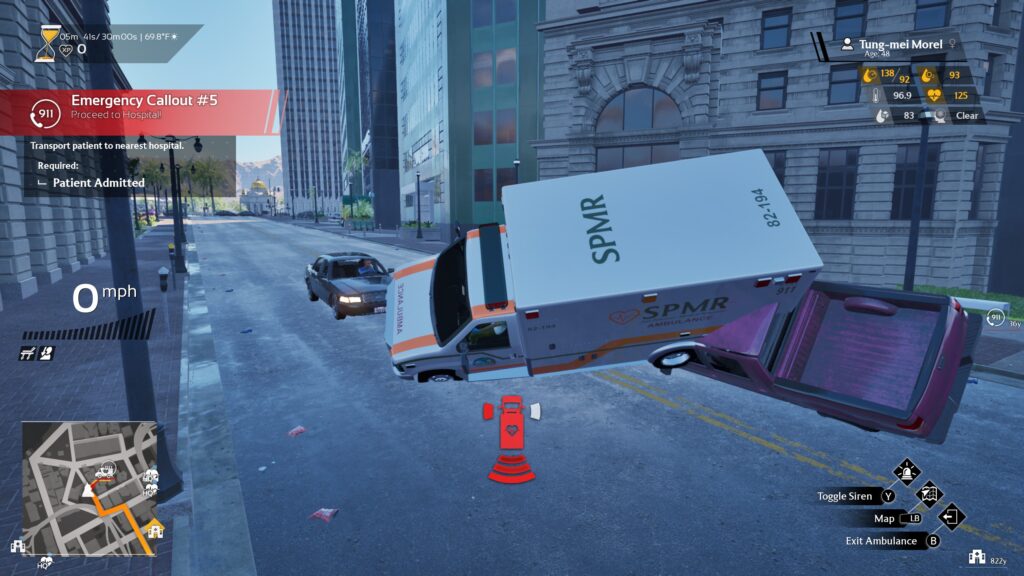
You can use your tablet in-game to check likely diagnoses, which the game can outright tell you. Selecting these from drop-down menus will give you a checklist to ensure the patient is receiving the correct care. Some of these, such as the one that directs you to apply bandages, often didn’t trigger as complete for me. At one point, the menu for administering care stopped working too. I would also sometimes be told to perform a tracheostomy while in the ambulance, but you can only do one outside of it, for some reason. I need to point out that you’ll often find patients sitting in pools of blood, but then they typically don’t seem to have any wounds that would have led to this.
When a patient is in their skivvies in the back of the ambulance, they can come down with hypothermia, but you don’t seem to be able to cover them with a blanket to prevent this. All you can do is turn the heat on, which I thought was strange. Speaking of strange, patients often have bloodstains on their clothes when you first arrive on scene. Removing their clothes via bandage shenanigans, however, often shows that the patient simply has a bruise. It appears that someone wasn’t aware that bruises don’t bleed, which is an incredibly surprising thing to see in a game of this sort.
There are other bits like that too, such as how you use a syringe with a needle on it on the vascular access ports. If you’re using a needle, you don’t need the ports to begin with, just inject them directly!! You’ll often provide patients with a saline solution, a familiarity to anyone who’s been in the hospital, but this is also administered via syringe instead of a drip. I could go on about similar examples, but it’s just really jarring and once again, damages immersion. By default, patients are very rarely in any danger unless you have faster condition deterioration turned on. The game made me feel more like a gofer than a paramedic due to this.
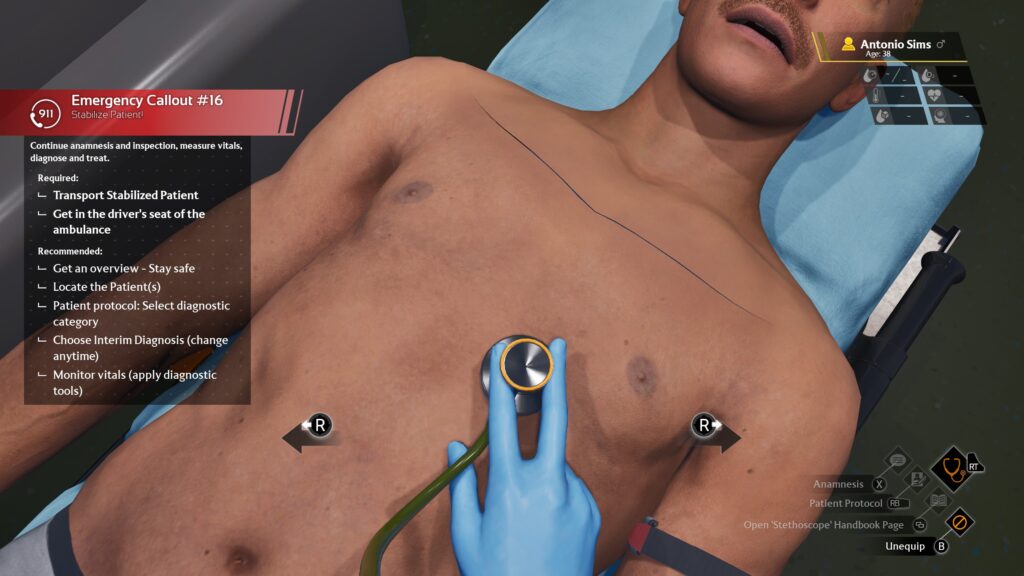
Of course, the driving is also a huge part of Ambulance Life: A Paramedic Simulator. Much like everything else in the game, it isn’t very good. That isn’t to say it’s awful, though! Ambulances simply do not control like cars. The controls are plenty responsive and I found myself able to drive around with ease, but the turning and acceleration are incredibly unnatural, so anyone picking up the game because they want to drive ambulances is going to be underwhelmed here too. You can turn your siren on, which typically causes cars to slowly move to one side to make way for you, but some cars don’t respond at all.
NPC cars in the game behave rather odd. I’ve watched them drop from the sky, their fronts ends will dip below the ground, they’ll upend each other, drive very slowly, or just not move at all. I’ve been behind cars at a green light that just had no intention of moving. You can wreck the ambulance if you hit something while going quickly enough, but there isn’t any damage model for any of the cars that I saw. When you wreck your ambulance, a note just appears on screen and tells you to reload a checkpoint, unless you turn this option off. Hitting pedestrians also has you reload, as it’s something that can’t occur for obvious reasons.
Pedestrians themselves tend to get out of the way when the siren’s on, but sometimes they’ll speed walk directly into your path and get themselves hit. Speaking of pedestrians, you’ll often find one or two at the scene when you arrive and you can ask them questions. Strangely, they almost never seem to know anything, as they usually remark that they don’t know who the patient is. When spoken to, patients will initially state what’s bothering them in a highly awkward way. “The pain is in my core!” You can select from a list of unchanging questions, but no one ever seems to have anything helpful to say.
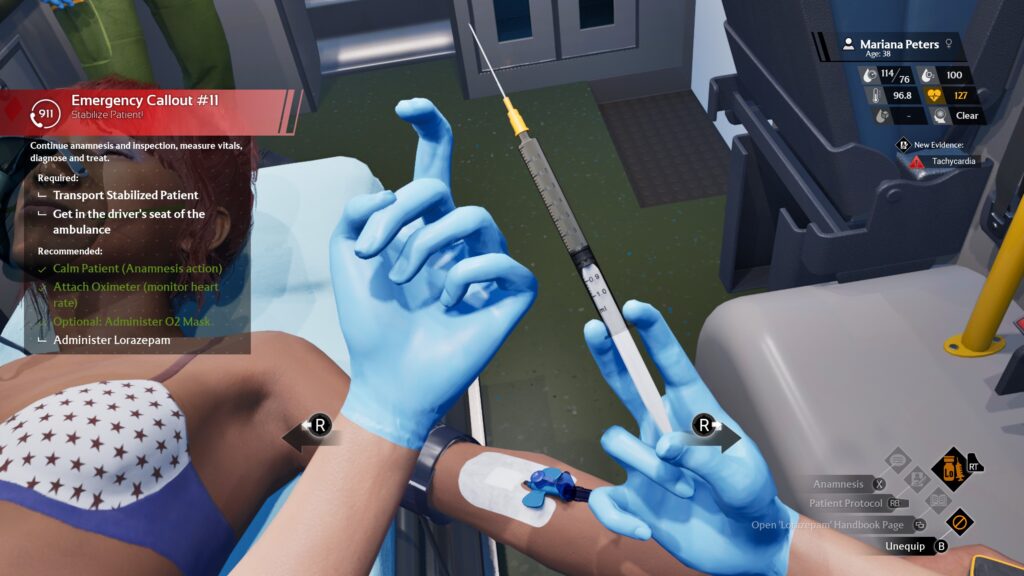
As bad as much of the above is, the worst part is still the progression, though. So much of the game’s content is locked behind levelling up, which takes longer and longer as the game goes on. To put it simply, there is not nearly enough content in Ambulance Life: A Paramedic Simulator to fill a 20+ hour game. It really feels like you’re doing the same exact things with almost no variation, so the game really shouldn’t have locked away so much of its content. But even that doesn’t always mitigate the repetition issue. Upon unlocking the second district, I found that most of the 911 calls just returned me to the first district, where I’d spend the rest of my shift.
Towards the end of a district’s unlocks, you’ll be able to take part in catastrophe events. The first of these, for instance, is a freeway collapse that sees you leaving triage tags on everyone, including multiple dead bodies. If that sounds incredibly jarring and at odds with the rest of Ambulance Life: A Paramedic Simulator, you can be sure it is. At least they’re more substantial than the usual callouts, but the game simply didn’t have the budget to make any of this look anything but silly.
There is something zen about zoning out, picking up patients, and quickly treating them. But Ambulance Life: A Paramedic Simulator is such a repetitive, clumsy game that the experience is usually just tedious and obnoxious in equal measure. The game needed an actual random callout system instead of just having a few variations for each, but it also needs a lot of polish and a better progression system. What’s left is an undercooked game with a great premise and awful performance.
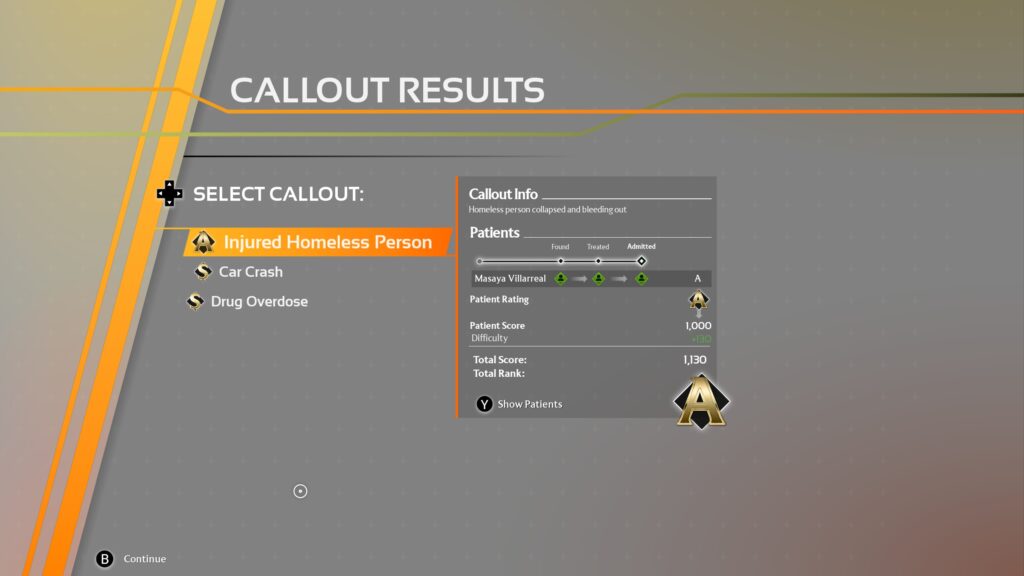
Ambulance Life: A Paramedic Simulator: Janky and insanely repetitive in equal measure, Ambulance Life: A Paramedic Simulator is a swing and a miss, with too little content that it questionably locks players out of for far too long. – Andrew Farrell
Dynasty Warriors: Origins PC review — A leap in the right direction |

